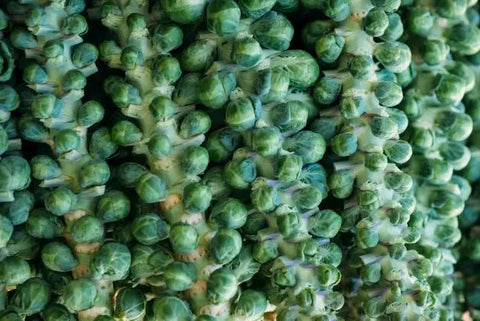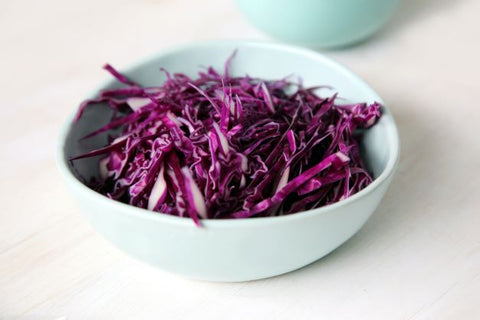Breaking down the Brassica Family
Grab your Gas X. Just kidding - it’s not that kind of break-down.
“Eat your vegetables!” A common (and occasionally inflammatory) expression spoken at many a dinner table. Typically, it involves a bit of bartering depending on the age of the dinner guest. Calling them ‘little trees,’ adding some ranch dressing or melted cheese, and taking whatever means necessary to encourage consumption of these plated powerhouses - sound familiar? As a kid, it often felt this so-called ‘advice’ was used as a cruel means of delaying some sweet, syrupy dessert. But it turns out my parents DID know what they were talking about - vegetables ARE good for you and none more so than members of the Brassica Genus.
And just what falls into this category?
It’s quite the extended family- (so big, you’ll need the extra table leaves for Thanksgiving Dinner): cabbage, kale, brussels sprouts, broccoli, broccolini, kohlrabi, rutabaga, turnips, mustard greens, horseradish, watercress and radishes - to name but a few. The Brassica Genus includes over thirty species in the mustard family. The veggies we’ve grown to love (or at least appreciate) are all part of the same original plant:
- Turnips and Horseradish come from the root,
- Kohlrabi is a part of the stem,
- Cabbage, Kale, Mustard Greens - they are all leaves,
- Broccoli and Cauliflower -the budding flowers
- And Brussels Sprouts are what is known as an axillary bud - a lateral shoot from the ‘armpit’ of the leaf and stem that can produce its own flowers.

Glucosinolates
-
Shereen Lehman, MS from her article: Health Benefits of Glucosinolates on VeryWellFit
Glucosinolates are credited with reducing your risk of cancer significantly and improving your cardiovascular health. They’re also the reason your greens taste so bitter. As if cancer fighting properties weren’t enough, these garden all-stars are also stocked with Vitamins A, C, K, Folate, Fiber, Biotin, Iron, Magnesium, Carotenoids and Calcium.
Cole Crops
Often referred to as Cole Crops, these vegetables fare better in cooler weather. Despite how it sounds, the word ‘cole’ is actually derived from the Latin root ‘caulis’ meaning ‘stem.’ Each variety will vary in its specific needs but it’s safe to consider them mostly spring and fall crops - book enders to your gardening season. Cole crops love full sun, well-draining soil, and lots of organic matter to feed on. Be mindful of the temperatures though - they will bolt, blister or otherwise fail if things get too toasty and they don’t get adequate water. Row covers will help protect them from cabbage worms and so will companion planting! Try Marigolds or Nasturtiums to deter all of those hungry bugs.

When it comes time for harvesting, remember to get a mix of raw and cooked cruciferous vegetables onto your dinner plate: add purple cabbage to your Taco Tuesday, sauté your kale with a bit of fresh garlic, mix julienned kohlrabi in with your coleslaw and why not try a zesty dip to liven up your cauliflower florets?
Love ‘em, like ‘em, or leave ‘em as ornamentals, the Brassica Genus is hard to outshine. They are, perhaps, the most respected vegetable group in the world of gardening.
The health benefits alone are enough to add them back into my daily diet. I eat my veggies now - far less begrudgingly (and occasionally that dessert too.)
My niece and nephew can’t get enough of some simple roasted broccoli with salt, pepper and a squeeze of lemon - it’s like we’re not even related.


This is a fantastic article that, like it’s subject, was made even more palatable by the lighthearted humor. As I read it, I wondered if Kalette is in this genus as well. Thank you very much for the morning read with my coffee.
The article was very informative. Even though I know the value of the Brfassicas, the explanation was worth reading and pleasantly informative!